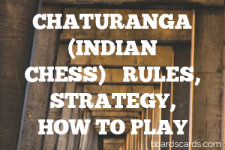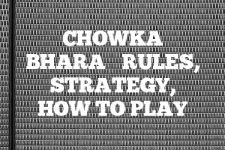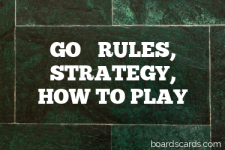Mahjong: Unraveling the Ancient Game with Strategies, Rules, Instructions
Introduction
As an author specializing in board and card games, I have always been fascinated by the rich history and strategic depth of Mahjong. This ancient Chinese game, often compared to the Western card game rummy, is a game of skill, strategy, and a dash of luck.

It’s played with a set of 144 tiles based on Chinese characters and symbols, indeed I’ve seen some Mahjong sets with really cool tile designs. The game was developed during the Qing dynasty in China and has since spread throughout the world, with many regional variations.
The basic goal in Mahjong is to be the first player to get a complete hand of 14 tiles, with four sets and a pair. A set can either be a “pung,” which is three identical tiles, or a “chow,” which is a run of three consecutive numbers in the same suit. A pair is two identical tiles. However, the game’s complexity lies in the numerous possible combinations and the strategic decisions involved in achieving them.
A few trick-taking card games have similar mechanics to Mahjong, if you’re interested. Those include Skat and Liverpool Rummy, two games I’ve written guides on previously.
Quick tip to win Mahjong
Always keep an eye on your opponents’ discarded tiles. This can give you a clue about their possible hands and help you decide which tiles to discard.
Rules for playing Mahjong
The official rules of Mahjong, as established by the World Mahjong Organization, provide a comprehensive guide to the game. However, it’s important to note that many players use ‘house rules’ or regional variations, which can slightly alter the gameplay. Here are the basic rules:
- Each player begins with 13 tiles. In turn, players draw and discard tiles until they complete a legal hand using the 14th drawn tile to form four sets and a pair.
- A player can steal a tile from another player to complete a set. However, this action may only be done to complete a ‘pung’ or a ‘kong’ (four of a kind), and only if the tile was discarded by the player immediately preceding them.
- The game continues until a player completes a legal hand and declares “Mahjong”, or until there are no more tiles left to draw.
How do you play Mahjong
Setup
At the beginning of the game, the tiles are shuffled and stacked into a square wall. Each player then draws 13 tiles and arranges them on a rack.
Gameplay
The game begins with the player to the right of the dealer. Players take turns drawing a tile from the wall and then discarding a tile by throwing it into the center and announcing its name to the other players. The goal is to form sets of tiles.
End of the Game
The game ends when a player forms a complete hand and declares “Mahjong”. If no player can do this before the wall of tiles runs out, the game is considered a draw.
How to Win at Mahjong
Winning at Mahjong requires a combination of strategy, observation, and decision-making. Here are some strategies that can help you improve your game:
- Always be aware of what tiles have been discarded. This can give you an idea of what hands your opponents might be building, and help you decide which tiles to discard.
- Try to keep your options open. It’s often beneficial to wait and see what tiles you draw before committing to a specific hand.
- Remember that you can only win with a legal hand. Make sure you understand the requirements for different types of hands.
Best Strategies for playing Mahjong game
While the basic strategies can help you understand the game, mastering Mahjong requires a deeper understanding of the game’s intricacies. Here are some advanced strategies:
- Plan your hand early. While it’s important to stay flexible, having a clear plan can help you make decisions more quickly and accurately.
- Control the game. Try to influence what tiles your opponents can access by carefully choosing what tiles you discard.
- Balance risk and reward. Sometimes, it’s worth taking a risk to complete a high-scoring hand. However, be careful not to leave yourself vulnerable to your opponents.
Scenarios for Mahjong
Understanding different scenarios in Mahjong can help you make the best decisions during the game. Here are some common scenarios and how to handle them:
- If you’re close to completing a high-scoring hand, but it requires a tile that many players have discarded, it might be worth taking a risk and going for it.
- If you’re far behind and the game is nearing its end, it might be best to play conservatively and aim for a low-scoring, but guaranteed hand.
- If you notice a player is discarding many tiles of a certain suit, they might be trying to go for a hand of a different suit. Use this information to your advantage.
Frequently Asked Questions about playing Mahjong game
Can I play Mahjong solo? While Mahjong is traditionally a multiplayer game, there are many online versions that allow you to play solo.
What is the difference between Chinese and Japanese Mahjong? The main difference lies in the scoring system and the number of tiles used.
Can I declare “Mahjong” with a stolen tile? Yes, as long as the stolen tile completes a legal hand.
What happens if no one declares “Mahjong“? If the wall of tiles runs out and no one declares “Mahjong“, the game is a draw.
Can I change my hand after I’ve declared it? No, once you’ve declared your hand, you can’t change it.
External Links
Mahjong Solitaire: Free online game (no registration)

Eve Brownlee was a gamer before gaming communities on the internet were a thing. Eve grew up playing traditional, standard deck card games like Rummy and Bezique, taking an interest in the classics Backgammon and Chess. Parlor card games like Bridge continue to keep Eve active in the community. After a long career, primarily in horticulture for USDA in Maryland, Eve now travels and writes on The Pineapple (pineapples.info) and contributes to Quora/Pinterest topics. Contact Eve via email.



